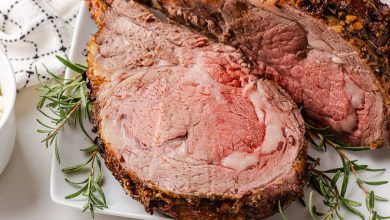White Medium-Grain Rice (Raw, Unenriched)
White medium-grain rice is a popular staple ingredient found in many cuisines around the world. Known for its soft, tender texture when cooked, it is a versatile base for a wide variety of dishes, from savory to sweet. This raw, unenriched rice is typically used in both everyday meals and special occasions. Whether steamed, boiled, or stir-fried, it is a favorite in dishes such as risottos, sushi, pilafs, and rice puddings.
Nutritional Breakdown
| Nutrient | Amount per 100g |
|---|---|
| Energy | 360 kcal |
| Protein | 6.61 g |
| Total Fat | 0.58 g |
| Saturated Fat | 0.158 g |
| Carbohydrates | 79.34 g |
| Fiber | 0.0 g |
| Sugar | 0.0 g |
| Calcium | 9.0 mg |
| Iron | 0.8 mg |
| Magnesium | 35 mg |
| Phosphorus | 108 mg |
| Potassium | 86.0 mg |
| Sodium | 1.0 mg |
| Zinc | 1.16 mg |
| Copper | 0.11 mcg |
| Manganese | 1.1 mg |
| Selenium | 0.0 mcg |
| Vitamin C | 0.0 mg |
| Thiamin (Vitamin B1) | 0.07 mg |
| Riboflavin (Vitamin B2) | 0.048 mg |
| Niacin (Vitamin B3) | 1.6 mg |
| Vitamin B6 | 0.145 mg |
| Folate (Vitamin B9) | 9.0 mcg |
| Vitamin B12 | 0.0 mcg |
| Vitamin A | 0.0 mcg |
| Vitamin E | 0.0 mg |
| Vitamin D2 | 0.0 mcg |
Allergen Information
White medium-grain rice is naturally gluten-free and does not contain common allergens such as dairy, eggs, or soy. However, it is always important to check for cross-contamination, especially if you are following a strict gluten-free or allergy-conscious diet.
Dietary Preferences
- Gluten-Free: Naturally gluten-free, making it a safe option for those with celiac disease or gluten sensitivity.
- Vegan: Rice contains no animal products, making it suitable for vegan and vegetarian diets.
- Low-Fat: With less than 1g of fat per 100g serving, this rice is low in fat.
- Low-Sodium: Contains only 1mg of sodium per 100g, making it ideal for a low-sodium diet.
- Kosher: This food is typically certified kosher, though it is important to verify certification when purchasing.
Cooking Tips
- Fluff It Up: To achieve fluffy rice, rinse it before cooking to remove excess starch, which can make the rice overly sticky.
- Cooking Ratio: The typical ratio is 1 part rice to 2 parts water for medium-grain rice. For a firmer texture, use slightly less water.
- Enhance Flavor: Add a pinch of salt, a splash of oil, or a small piece of a bay leaf while cooking for added flavor.
- Storage: Once cooked, rice can be stored in an airtight container in the refrigerator for up to 4-6 days. It can also be frozen for longer storage.
Conclusion
White medium-grain rice is a nutrient-rich, versatile ingredient that fits well into a wide range of dishes. With its mild flavor and ability to absorb sauces and seasonings, it’s a favorite choice for both everyday meals and more sophisticated fare. Rich in carbohydrates, this rice provides a steady source of energy and is also a good source of protein and essential minerals like magnesium, phosphorus, and zinc. Whether you’re cooking a comforting bowl of rice or preparing a side dish, this simple yet nutritious ingredient is a perfect addition to any pantry.










